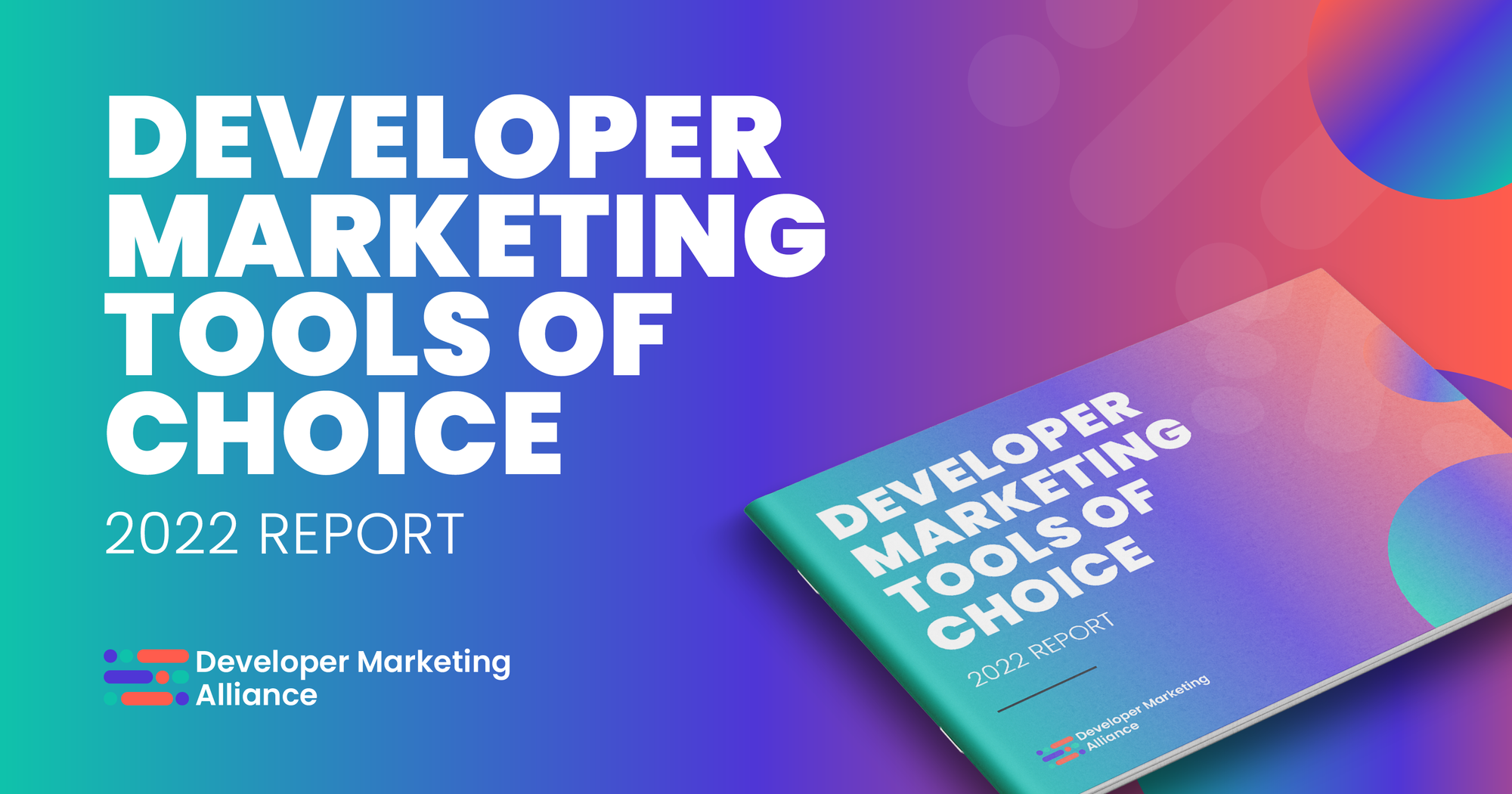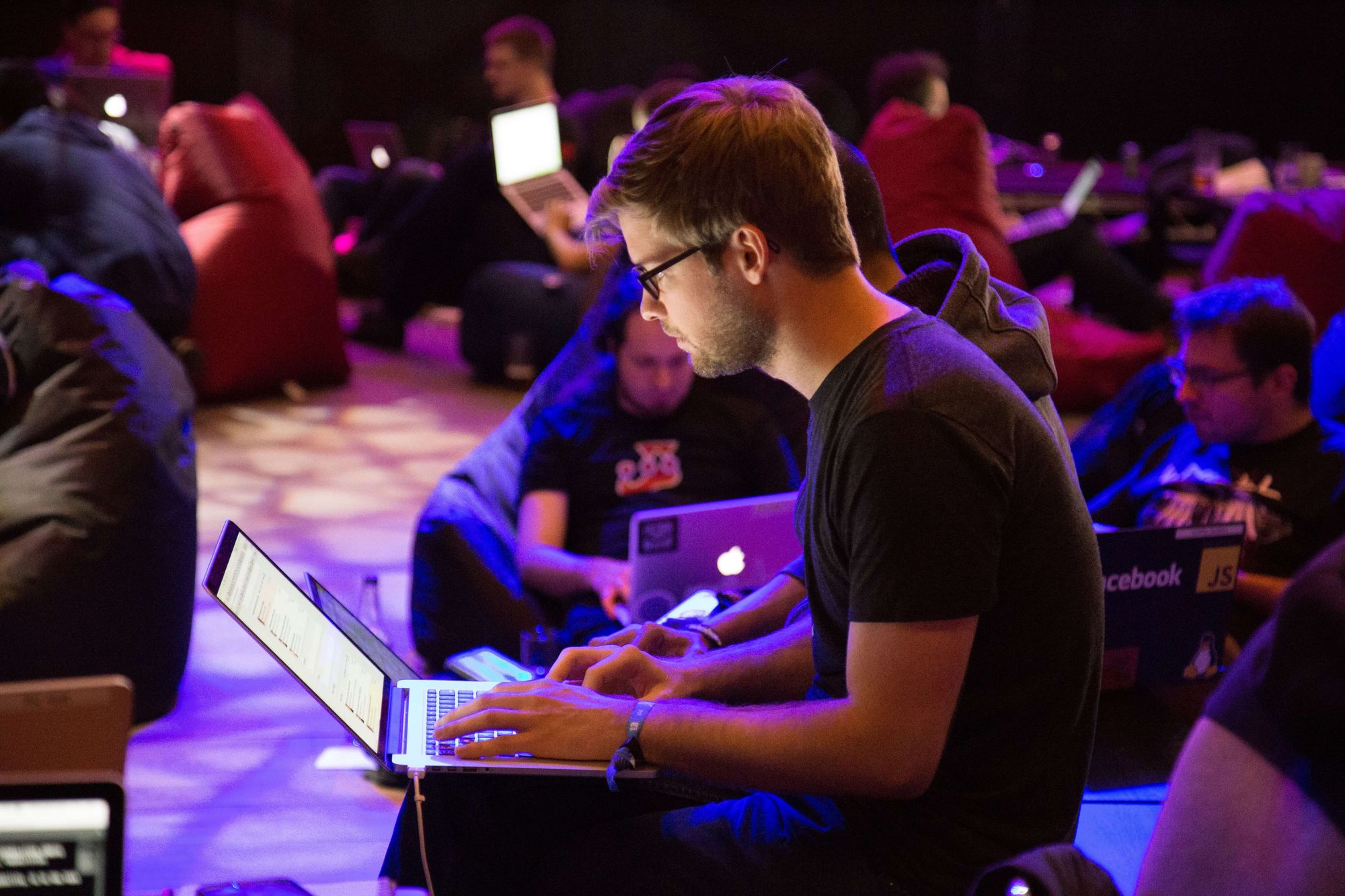In this article, Michael Francisco, Vice President of Marketing at Common Room, and Viraj Mody, Co-Founder, CTO at Common Room, discuss how you can gain a deeper understanding of your community and fuel its growth with the innovative Common Room platform.
The importance of measuring community
Michael
The market is evolving to a place where community is becoming a much more influential part of the customer buying journey. We have some very opinionated positions on how we think about community, how we think about measurement, and amplifying your champions.
As you think about the lifecycle of your community and as your community matures, what it is at the beginning is very different from what it becomes.
How do you think about measuring your community, both in terms of health and how you quantify the business value that your investments and community bring?
In essence, community should be a channel that you can leverage to bring down the cost of sales and accelerate sales cycles. For companies that sell community first, 80% tend to have a sales cycle less than a quarter long, whereas those that don't tend to have sales cycles extend up to a year. And 83% of companies that are community-led have a sales cycle that's within the first quarter.
When we talk about community, it's more than just the people that are sitting inside your forum. Community.cisco.com is not your community, that's a subset. But there's a larger set of people who are out there.
Even if you don't think you have a community, you do. There are people out there talking about you, and they're either helping you or they're not, but they're out there having conversations. So, if you're not supporting it and it's out there living in the wild, that’s a scary place to be when you think about who's influencing the cycle.

When we talk about community, it's your current users and your future users. It's people who are evaluating your product that may never end up on your platform. But for learning, it's your existing users who are trying to expand their own knowledge and skills and get support.
Community isn’t just something you do in order to engage developers, have great events with them and get people using your tools; it has an impact across the entire business, from product getting product support, ideas, beta testing, and even bug identification.
When you have a good handle on your community, if something goes wrong you can be certain that people are talking about it. And that's a great way to get ahead of those things that maybe you haven't found on your own.
A lot of people go to the community for support. They might come to your knowledge base and your forums, but they're also out there supporting themselves. If we're thinking about business metrics, bringing costs down and ROI, case deflection is a big one.

Retention is important as well. If somebody can get their question answered and their problem has a short life span, they're more likely to stay with you if they can get those things solved.
Customer success is another important area. You can learn a lot from your community which will help influence your customer success motions.
The more the customer learns about how to use your product from their peers, the more satisfied they're going to be. And that will also help with your customer success, retention, and expansion efforts.
This is an interesting stat from one of our customers. We took their Salesforce data and combined it with their community data to look at the impact on community relative to their sales pipeline. And we found that the customers we're seeing in the community before they were in Salesforce accounted for 5.3 million ARR. Some people might look at that number and scoff, but for the customer that's significant.
The opportunity size that existed in the community before it showed up in their marketing pipeline was 50.5 million ARR and about 8,500 licenses. So there's a really strong correlation between community and pipeline.
Being able to see these things before they enter your CRM and marketing automation, we're seeing them in real-time. We're seeing that as being real for our customers, and so we see this as a real trend.

Get intelligent community insights with The Common Room platform
Viraj
We now want to focus on understanding how to measure the impact that your team and your efforts are having on the bottom line of the business. It could be from evaluating the effectiveness of events, pre-event, post-event, pipeline, revenue, or whatever metrics matter to your business.
One of the things that we see community do from a bottom-line perspective is that they increase their leverage from new product announcements or events you're doing.
Before an event or an announcement, how do you identify who you want to nail the messaging to before you even make your first draft? How do you identify the people you want to preview this with? How do you make sure there are people in your community or customer base to reach out to before you make your announcement?
Then once you make your announcement or have your event, who's reacting? How are they reacting? Where are they reacting? What is the response to your event or product announcement?
Is your social activity positive or negative? Where is it? If it's outside of your property how do you get access to that? How do you get insight into that? And what's the general pulse of what people are saying?
Then, once your announcement or event is done, what’s next? How do you convert this to action? How do you make this actionable for your community?
This is where Common Room comes in.
Let’s use an anonymized community as an example and pretend the announcement I’m talking about is about SSD performance.
So part of the question was, before the event, how do you identify who to invite or bring in? Common Room has a way for you to look at activity across all of your sources. This covers not just sources that you own.
It covers forums, GitHub, Meetup, Slack, Stack Overflow, or Twitter, and there are a dozen other sources you could add.

If you can find a way to aggregate everything that's going on, run a search for the thing you're going to announce and you’ll have a list of all the people talking about it.
Let's try and identify people having these conversations and then look at them. For example, “This person had a negative impression of performance. This other person had a feature request.” If this is from an ML engineer at Apple, that sounds like a good person to get input from before you float your announcement.
You can go in there and get a lot more information about everything this person's been doing across all the different sources that they engage with you on. Then, maybe, directly reach out to them. DM them in their Slack since they exist in your community as a way to float what your announcement could be.
In terms of identifying who your champions or your most vocal customers are, you can do it based on the activity or what they're saying. You could do it based on sentiment, “Here's somebody who has a positive impression already, let's go and see if they'll give us a testimonial.”

You could do it based on who they are and where they work, but it's a good way to narrow down the whole pre-event logistics. If I float my messaging, what's the response?
Another frequent question we think about is who you're going to invite if you're holding an event. For example, if I'm holding an event in San Francisco, let me invite every influencer who's not on my team, and who belongs to a company located in San Francisco. Now you've narrowed down your community of thousands to 39 people who you might want to invite to your press event.
It's pretty easy to go from here and put all these people in a segment. And, within a segment, you can track who you’ve invited, who has RSVPd, and if they've RSVPd whether they’re coming or not.
The second part of this is in the moment. Once you have an event going on, can you see what's happening? So, we view some models to build trending conversations. You can see only what's trending, and it will exclude people who are on your team and you can see across all of it and slice it by a certain number of days.
You can get a good pulse on trending conversations. For example, there could be a conversation going on in your Slack that has some positive and some negative context. You can go in and see the entire conversation and everybody participating in it.
So, as you run your event, this can be a good place to centralize your view of what's going on, and then you can use this to understand your sentiment and if you need to go and address something in real time.
We're talking about Common Room specifically, but these concepts exist for all of us, no matter what tooling we use.

Providing value to encourage community growth
Michael
We're a fairly new company and we're also working to build our community. At the highest level, building community is really about adding value. So when you're going out and engaging with people, are you providing them with answers and responses that actually help them solve the problem so they start building that trust? That takes time.
We're a company built on the idea that community is really important, and our community is still burgeoning. So I think at the highest level, it's going out and engaging, really focusing on user needs and going out and addressing that.
You also need to go to where these people are. If you look at our community strategy, we're really focused on supporting our community, but where we see our community growth happening is actually us going out and getting engaged in the other places where these people exist today.
We're spending a lot of time in community communities or DevRel communities and just engaging in the conversation and trying to support those conversations with real value.
The goal should be to go out in these communities, engage, and provide value to those folks. And as they see you doing that, they start associating your name and will then start coming to your community for that very specific type of information.

Viraj
If you've had a big announcement and you want to poll a specific set of users, we have something called Workflows where you can send a survey question, craft your survey, and target it to exactly the right people.
For anybody who's complained about something and has been inactive for the last 15 days after your announcement, send them a survey. You can do all of that within the tool. Then the responses get captured back in the tool and you can start building your segments. For example, “These people were disengaged. We made this announcement, they responded to the survey, and now they're engaged.”
Then, with sales, how do we funnel them into the lead stage within the CRM or whatever system you use? We're working on this concept called Community Qualification where you can rate the quality of your interactions and how it matters to your company.
What matters to you may not matter to somebody else, but that's ok. Our universe is essentially all of these channels multiplied by all of these actions within every channel. You define the weights for them along with your threshold for whether a lead is qualified or not, and then let the system take care of it.
So now your sales team can know and they can see the community activity right alongside all of their sales tooling. For example, they can see if a person's engaged in such a way on these forums and decide to Slack them instead of emailing them.

Michael
The trick is to make sure you have the data flow because your sellers are aggressive. They want to go after anything that looks warm. And so make sure that you protect your community by only surfacing the things that really feel like opportunities, and be able to clearly delineate between the person that’s using versus the person who should be sold to.
You never want your community to feel like they've become a marketing channel. They're there for value. As I think about lead flow, that sits on the marketing organization, and working with the community and DevRel teams is essential to make sure that they're being protective of their community movement all the way through.
All of these were built on best practices from the design partners that we worked with as we built the tool. So, all of this is built on things that other people are doing in maybe a more manual way, but the same patterns and behaviors are what we've tried to build into the tool.
Making community insights your strategic advantage
Viraj
We've used NLP models and some form of language clustering to identify topics that are being discussed. Let's say you had an event around SSD performance and clustering and you wanted to see who's talking about clustering, you can go through these, scope it down to whatever time frame you want and say, “Oh cool, here's a bunch of people talking about ZooKeeper.”
It'll show you exactly who’s saying what, what the trending sentiment is, how much is positive, the different places where people are talking about this, and who the people engaging on this topic are.
In some ways, the customers of a community team are the support team, the marketing team, and the sales team. Each of them can go and identify the corner of the product that works for them and say, “Look, I'm in support. I care about people complaining about bugs in this space.”
Another thing to think about is, how does a community provide insights and context for the go-to-market team?
Some things to consider here are, how can you best serve the needs of your customer even before the first call? If your marketing or sales team is about to make a call, can they get all the context they need? Is this person already a champion? Are they already familiar with my product? Have they expressed frustration? Have they expressed delight?

Getting all that information beforehand would change the entire tone of the call. Knowing that I spoke to this person or I put them on a campaign, they ended up asking a bunch of these other questions and now I can use that to help accelerate the deal, customize my reach out, and so on.
Retention churn’s an interesting one on the CS side of things. If a renewal is coming up, it would be nice to get an account-based view of what the sentiment in there is, who are your champions, and who’s most engaged in the community.
One way we've looked at this in Common Room is you can go and look at a particular organization, and within there if you have an ABM approach to Netflix, you can go see every person from this company who’s engaged in your community, what platform, when they were engaged, what the overall sentiment is, and who your champion might be.
So as it's coming up on renewal, you can now create a strategy that aligns with signals from your community in addition to signals from a business and product.
At the same time, you can see what new organizations are showing up in your community. This is again where GTM alignment comes in. For example, I might want to see who has raised at least $5 million or more in VC funds. Now you've narrowed down four companies that just showed up in your community over the last few days who have a certain type of budget you can go create a strategy around.
Michael
I think, at the highest level as you're growing your community, you should look at things like new users and how many are active and engaged. As it grows over time, you should start thinking more about if your community is self-serving or if it’s creating a flywheel where it's supporting itself.
You then start looking at things like responsiveness rates. If somebody drops into my community and asks a question, are they going to get a response? How quickly are they going to get a response? Does my team have to provide that response? And I think as they mature, you start thinking about those different metrics.

How to re-engage your community and restore its health
Within Common Room, we've built a pretty handy place for all of reporting. You can get a quick glance at your community health. How are things trending? What's my engagement? How's my membership? Is it growing or shrinking? What are my response rates? And then you can dive in as you think more deeply about each one.
You can also look at overall engagement. The definition of engagement varies. You can use a default, out-of-the-box definition, or you can change it.
Also, how active are your members? Which of the sources are the most active? Again, activity is very company-specific.
This is similar to a bird's eye view of sentiment overall and how it's trending. This one's interesting; watching your community as it grows around the world and tracking it. We have some companies that will create OKRs around events specifically to drive up growth within a region. So, as you expand around the world, how can you see the impact of the work your team's putting in?
You can also look at responsiveness. You can see overall in the community if things have replies or not. And again, we use a bunch of heuristics as well as learning models to classify what is and isn’t a reply.
Then you can break it down to how many of these are conversations that your team is included in, how many of them are happening even outside of your team, and what the median response time is. If you want you can set goals around needing a 24-hour or a five-hour SLA, or when something has to be responded to by your team. You can start measuring those things way more accurately.
You can then dive into these individually. By platform, here's the overall community responsiveness, then, by platform, you can break it down and get a very granular overview, including properties you don't own such as Stack Overflow, Reddit, etc.

Michael
The core truth of building community is consistency, authenticity, and value. You have to be consistent with how you engage, and when people lose, get distracted, or get pulled off in other directions, it's hard to maintain that momentum with the community. And so engaging in a consistent manner and doing so in an authentic and value-added way is the most important thing to do.
Having a really good understanding of the business is a good way for you to focus. So if you have less time and you know that the vast majority of things are happening in Slack, being able to hone in on that and make that your center of excellence for community is a good way to help balance the workload there.
The other thing in all of this is the more you can demonstrate the value to the organization, the resourcing and distractions will decrease as you're able to show the impact as you go through those efforts.
Viraj
In regards to engagement, we've thought of it in two ways. One is giving you visibility of what's going on in a way that you can customize. With Common Room, you can get alerts such as, “whenever someone from EMEA is spotted in any of my communities, alert this internal Slack channel,” which is your EMEA experts. That way you can have custom engagement depending on who shows up in your community.
And then the other part around engagement is workflows. You can automate a lot of that engagement and say, “If a certain person is in the community and hasn't engaged in so long, let's DM them.” And it'll DM as you instead of a bot as a way to get them pulled back into the context around your company that they had previously.
The thing that we've taken away over the last couple of years is that everyone tries to solve all these problems with the right intent, all the right attention to detail, and outcomes. However, the labor involved is just ridiculous and many are flying blind because of the vastness of what can be a community and how dark it can be in terms of visibility.
Our north star is really shining a light on what's going on so that you can then do what's best for your business instead of worrying about digging through all of this data.
Michael
Because we believe in community and helping people build great communities, we do offer a free version of the Common Room product, which is a great place for new communities to start giving themselves a baseline.
You get lots of analytics to help you measure as you go, and help you understand where you are today and how to start setting goals for where you want to be.






